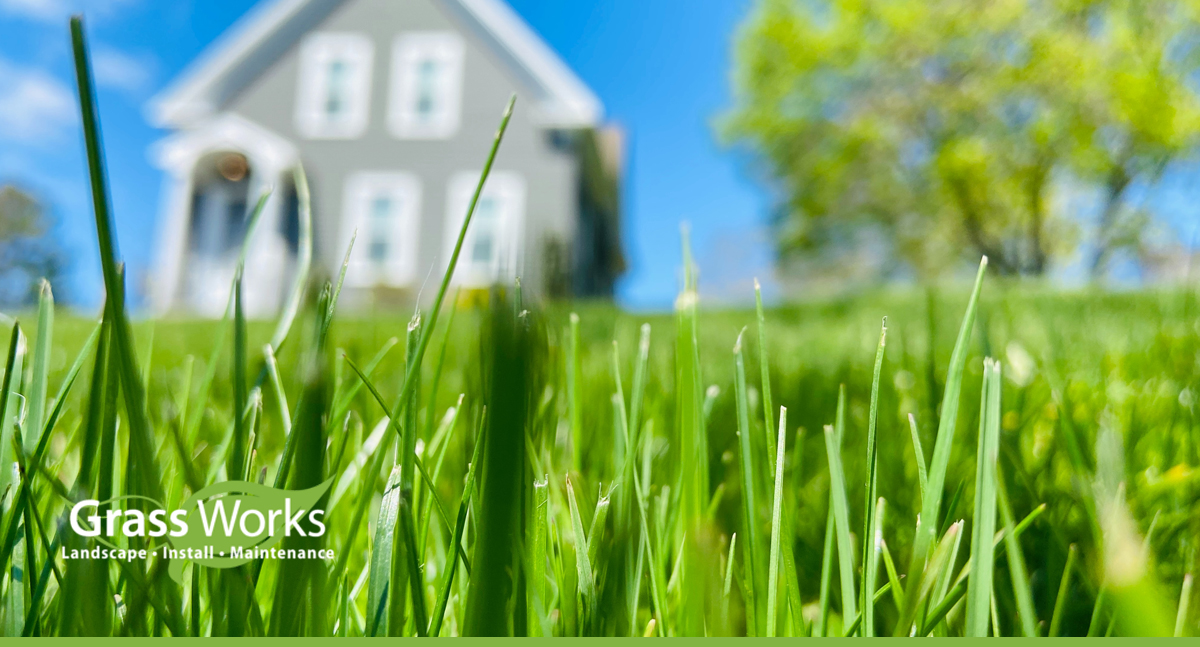St. Augustine Grass: Pros & Cons for Texas Lawns

Central Texas can prove to be a challenging climate for homeowners looking to grow and maintain lawns. The demands of the region have led to several grasses being popular choices including Bermuda, Buffalo, Zoysia, and St. Augustine. Still, even though St. Augustine grass offers numerous benefits, it isn’t necessarily right for everyone.
With that said, here’s everything you need to know to make the right decision regarding St. Augustine grass / sod for your Central Texas lawn.
The Benefits of St. Augustine Grass
St. Augustine grass is often turned to first when establishing Central Texas lawns for the following reasons:
Beautiful Appearance for Your Lawn
There’s no doubt about it: St. Augustine is a beautiful grass, and you’ve likely already taken note of lawns around the area that take advantage of its unique aesthetic. The distinct dark green of St. Augustine grass is easy to spot anywhere.
The grass is also well-known for its lushness and thickness. It not only provides exceptional curb appeal, but it also provides a comfortable landscape for outdoor gatherings of all kinds, including some family football.
Versatile Shade Tolerance
In most cases, homeowners want a uniform lawn surrounding their entire home, but that can become a challenge with varying shade. You could have trees on your property that cast shade or simply some shady areas directly beside your home or its fencing.
Luckily, St. Augustine grass has sufficient shade tolerance, meaning it is able to thrive in partially shaded areas. While it may not fare so well in a permanently shaded area, you won’t have to worry about your lawn withering in areas with mixed sunlight conditions.
Quick to Take Hold
Whether you’re making the switch from another grass, replacing a damaged or dead lawn, or starting out on a new construction, you’ll want your new lawn to take hold quickly.
Every type of grass has an initial period in which both its maintenance requirements and risk of damage are increased, but thankfully, for St. Augustine grass, that period ends quickly. You’ll find that your new lawn will establish itself before you know it, meaning you’ll have less to worry about and can also avoid any opportunistic weed growth early on.
The Disadvantages of St. Augustine Grass
Despite its abundance of positives, St. Augustine grass isn’t without its flaws. The fact that it fares so well in Central Texas can also lead to issues such as:
Potentially Aggressive Spread
You may find your grass spreading into flower beds and gardens over time, given that it takes hold so quickly and is tolerant to many factors. However, maintaining proper edging can typically make for well-defined borders between your landscaping elements.
Significant Maintenance Requirements
The climate in Central Texas isn’t kind to grass, even in the best cases, and that means your St. Augustine lawn will require significant maintenance to maintain its thick and lush appearance. Routine mowing and fertilization are both essential.
Additionally, dealing with invasive weeds and other types of grass can quickly become a burdensome chore, and there are plenty of opportunistic native plants ready to take over your lawn at the first sign of weakness.
Risk of Pest Infestation
Various pests pose a threat to lawns of all kinds, but St. Augustine grass is particularly susceptible to chinch bugs, which are found all over Central Texas. You could find yourself in need of pesticides or alternative solutions to protect your lawn.
High Water Requirements
The climate in Texas is what makes many grasses typically found elsewhere unsuitable for general use. The region’s hot summers and occasional droughts can quickly wither away grasses that hold up well in other climates.
A St. Augustine lawn can hold up fairly well in drought conditions in Southern regions of Texas that have higher humidity, but its overall water requirements can be substantial. To keep your lawn lush and healthy, you’ll need to water it regularly which can be problematic with water restrictions we’ve seen in recent years in Austin and surrounding cities. The City of Austin does not even recommend St. Augustine grass due to the high water requirements and some condo associations and HOAs will not even allow it installed on their properties for the same reason.
Is St. Augustine Grass the Choice for Your Central Texas Lawn?
While St. Augustine grass can offer a beautiful lawn in some regions of Texas, you may find yourself being one of many Austin homeowners who have found the grass a bit too maintenance intensive & water demanding. Because of the high water requirements that come with St. Augustine grass (and potential for future water restrictions), we at Grass Works Lawn Care generally recommend Palisades Zoysia for the Austin, TX area.
Grass Works has been providing Expert Residential & Commercial Local Lawn Care Services in Central Texas: Austin, Cedar Park, Round Rock, Avery Ranch, Bee Cave, Lakeway, Steiner Ranch & West Austin since 2007! Need help with your landscaping? Get a free estimate today!

Ferris MyCue is the founder and owner of Grass Works Lawn Care, LLC located in Leander, TX. As a former firefighter who maintained yards on his days off, he saw a need for a dependable, local maintenance company that knew the hill country climate and could deliver quality landscaping services for a reasonable price. Since 2007 he has used his leadership to grow the company into one of the top landscape maintenance companies in Austin and surrounding areas offering landscape maintenance, design, and irrigation services to both residential and commercial clients. Ferris is also a member of the Seasonal Employment Alliance (SEA) and an active participant in advocacy efforts to help promote cap relief.